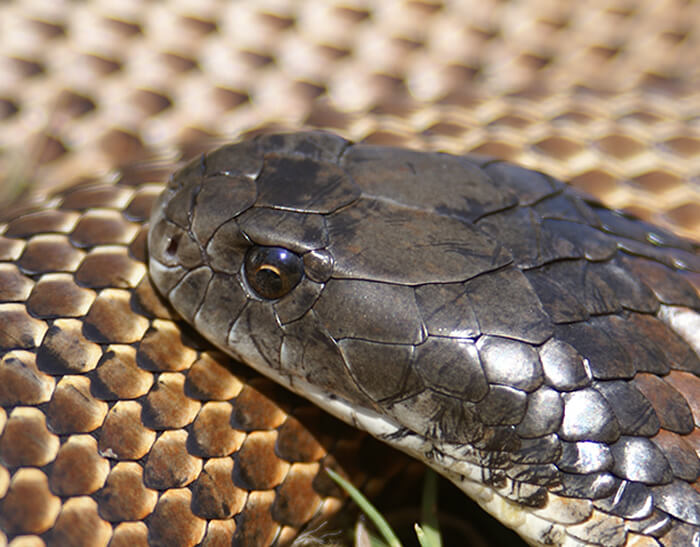Introduction
Tiger serpents (Notechis scutatus) are amongst the most remarkable yet feared reptiles discovered in Australia. With their striking appearance and potent venom, these serpents evoke a combination of admiration and caution. Observing tiger snakes in their natural environment can be a thrilling experience for nature lovers, wildlife photographers, and scientists alike. However, it's Swelling Reduction critical to approach this venture with regard for the animal's habitat and an understanding of safety measures to avoid serpent bites.
In this thorough guide, we'll check out just how to safely observe tiger snakes in their natural environment. We will cover topics varying from understanding their behavior and environments to emergency treatment for snake bites-- equipping you with understanding to boost your experience while reducing dangers.
What is a Tiger Snake?
Tiger serpents are very venomous snakes belonging to Australia, especially Tasmania and coastal regions. They are recognized for their distinctive banded coloration resembling a tiger's red stripes, which can vary from yellowish-brown to dark brownish and even black.
Physical Characteristics
Tiger snakes are medium to large-sized serpents that can mature to 2 meters long. Their bodies are robust, and they have a wide head that is distinctly wider than their necks.

Habitat Preferences of Tiger Snakes
These reptiles generally live in wetlands, estuaries, and coastal regions however can also be found baby eastern brown snake near freshwater sources like rivers and lakes. Recognizing where these serpents live is vital for any person seeking to observe them safely.
Understanding Tiger Serpent Behavior
Are Tiger Snakes Venomous?
Yes, tiger snakes are among the most venomous snake types globally. Their venom contains neurotoxins that can lead to serious clinical problems if bitten.
Behavioral Traits
Tiger snakes are usually timid creatures; they prefer to stay clear of human communication. Nevertheless, they can come to be aggressive if endangered or caught.
Where Can You Locate Tiger Snakes?
Tiger Snake Habitat Exploration
To securely observe tiger serpents in their natural common tree snake environment, it's vital first to recognize where they thrive. They tend to prefer:
- Coastal marshlands Mangroves Swamps Riverbanks
Best Locations for Observation
Some recommended locations include:
- Tasmanian wetlands The coastlines of southerly Australia National parks with water bodies
Safety Safety measures Before Observing Tiger Snakes
Understanding the Threats of a Tiger Serpent Bite
Although encounters with tiger serpents can be thrilling, recognizing the dangers entailed is critical:
Recognize signs and symptoms of a snake bite: swelling at the website, discomfort emitting from the bite area. Know emergency situation get in touches with: Familiarize on your own with neighborhood emergency services. Carry a first-aid package particularly equipped for snake bites.First Aid for Snake Bites: What You Required to Know
Knowing what steps to take if bitten might save your life or someone else's:
- Stay calm; activity raises venom spread. Call for clinical aid immediately. Do not apply ice or effort suctioning.
How to Safely Observe Tiger Snakes in Their Natural Habitat
When you make a decision to observe tiger serpents in the wild:
Dress Appropriately: Put on lengthy pants and durable boots. Use Binoculars: Keep a secure distance while observing these reptiles. Avoid Unexpected Movements: Quick movements might startle them. Stay on Established Trails: Stay clear of straying into dense underbrush where visibility is low.Equipment Needed for Observation
Essential Gear Checklist
- Binoculars First-aid package especially made for snake bites Field manual on Australian reptiles Camera (with zoom capacity)
Snake Bite Emergency treatment Set Essentials
A fully equipped emergency treatment package ought to include:|Item|Purpose|| -------------------------------|-------------------------------|| Compression bandage|To debilitate the afflicted location|| Antihistamines|For allergies|| Emergency get in touch with numbers|Quick access during emergency situations|
Interpreting Tiger Serpent Signals
Understanding just how tiger snakes connect with body movement assists viewers gauge when it's risk-free or unsafe:
Common Behaviors
Defensive posture: If coiled or raised off the ground. Retreating habits: When they slowly pull back from possible threats.Dealing With Possible Encounters
Even with preventative measures taken, an encounter may still happen during your monitoring trip:
Remain calmness; stressing just increases risks. Slowly pull back without transforming your back on the snake. Make your visibility known vocally however avoid sudden movements.Frequently Asked Questions Regarding Tiger Snakes
1. What need to I do if I see a tiger snake?
Remain tranquility; observe from a range without troubling it.
2. Are child tiger snakes dangerous?
Yes, juvenile tiger snakes are born venomous and may present risks similar to grownups in spite of being smaller.
3. Exactly how typical are tiger snake bites?
While events take place annually in Australia, fatalities are unusual as a result of punctual treatment availability.
4. Can I keep a tiger snake as a pet?
Keeping wild tiger snakes as family pets is unlawful in numerous areas due to conservation laws.
5. What does a tiger serpent attack look like?
Bite marks generally reveal two puncture wounds in addition to local swelling and discoloration.
6. Exactly how effective is antivenom?
Antivenom therapy is very effective when provided prompt after a bite.

Conclusion
Observing tiger serpents in their all-natural environment supplies an electrifying chance for wildlife lovers but must be come close to with caution and regard for both the animal and its setting. By arming yourself with knowledge concerning these interesting reptiles-- consisting of comprehending their actions and precaution-- you can take pleasure in memorable experiences while significantly minimizing threats associated with encounters.
In recap, always prioritize safety and security by preparing sufficiently before embarking on any wild animals observation expedition-- particularly when handling some of nature's most venomous creatures like the tiger snake!